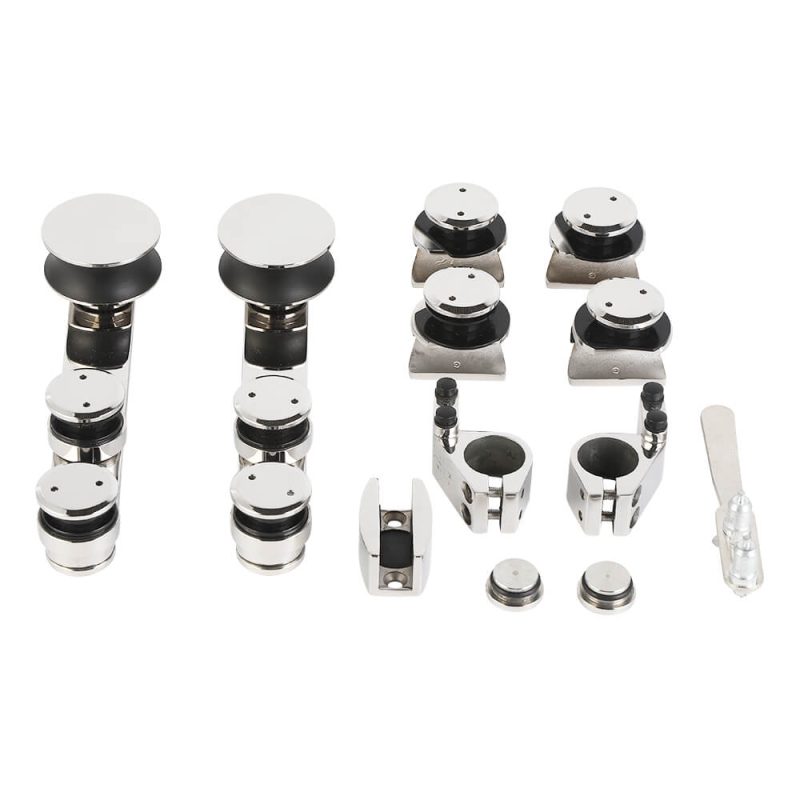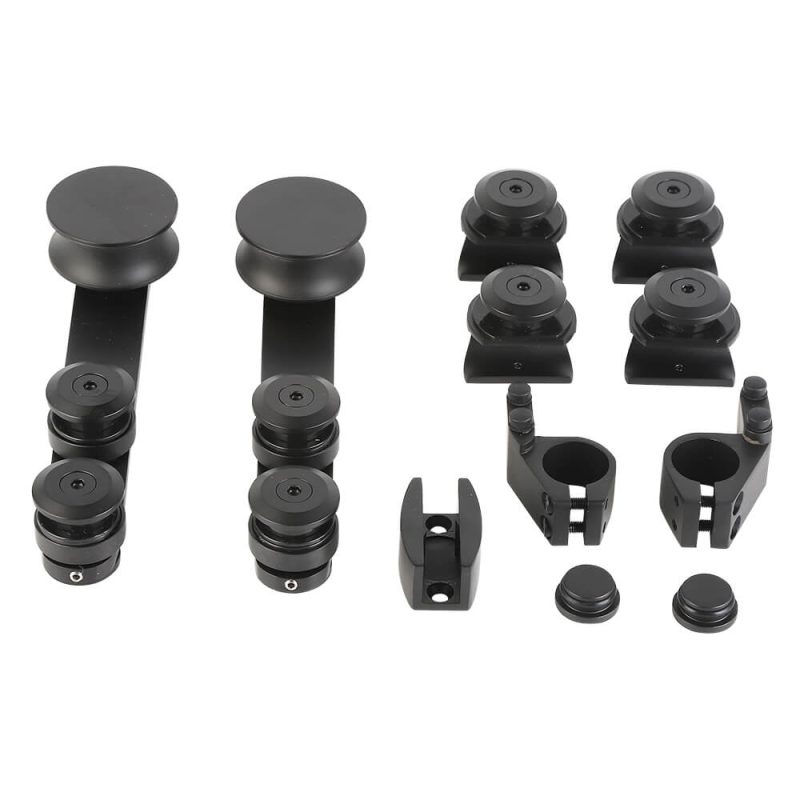Comparing Different Types of Tempered Glass Door Hinges
Tempered glass doors are becoming increasingly popular in both residential and commercial buildings due to their sleek appearance, durability, and ability to create a sense of openness. Selecting the right hinges for your tempered glass door is essential to ensure its functionality, safety, and aesthetics. This article will delve into the various types of tempered glass door hinges available, comparing their features, pros, and cons to help you make an informed decision.
Pivot Hinges
Pivot hinges are designed to support the weight of the door from the top and bottom, allowing it to swing freely on a vertical axis. They provide a clean and modern look with minimal visible hardware.
Pros:
Sleek and unobtrusive design
Smooth and effortless operation
Suitable for heavy doors
Adjustable for precise alignment
Cons:
Requires precise installation
More expensive than other hinge types
May not be suitable for high-traffic areas
Patch Fittings
Patch fittings are surface-mounted hinges that are attached directly to the glass door panel. They offer a versatile and cost-effective option for various door designs.
Pros:
Easy to install and adjustable
Affordable and widely available
Can accommodate different glass thicknesses
Available in various finishes to match the décor
Cons:
Visible hardware can detract from the sleek appearance of the door
May not be as durable as other hinge types
Not suitable for heavy doors
European Hinges
European hinges, also known as concealed hinges, are designed to be hidden within the door frame, providing a seamless and elegant appearance. They feature a compact design that minimizes hardware visibility.
Pros:
Minimalist aesthetic with hidden hardware
Durable and long-lasting
Adjustable for precise alignment
Suitable for both interior and exterior doors
Cons:
Requires professional installation
Slightly more expensive than other hinge types
May have limited load capacity
Floor Springs
Floor springs are concealed hinges that are installed at the bottom of the door and transmit the weight of the door to the floor. They offer a controlled and automatic opening and closing mechanism.
Pros:
Automatic opening and closing
Adjustable closing speed and force
Suitable for heavy and frequently used doors
Provides accessibility for people with disabilities
Cons:
Requires recessing into the floor
More expensive than other hinge types
May require regular maintenance
Conclusion
Choosing the right type of hinge for your tempered glass door depends on factors such as weight, aesthetics, functionality, and budget. By understanding the features and benefits of different hinge types, you can make an informed decision that meets the specific requirements of your project. Consider the pros and cons of each hinge type to ensure that you select the one that will provide the optimal performance, durability, and visual appeal for your tempered glass door.
-
Shower Glass Clips Hardware: The Ultimate Guide to Choosing, Installing, and Maintaining
05-12-2025 -
What Are the Different Types of Shower Screen Glass Clamps and How to Choose?
26-11-2025 -
Clip-On Shower Door vs. Traditional Hinges: Which Is Better?
21-11-2025 -
Stainless Steel vs. Brass: The Best Choice for Your Shower Door Clips
19-11-2025 -
Clamp vs Channel: How to Choose the Right Shower Glass Bracket
18-11-2025
-
What Does the Lock Retainer Clip Do in a Glass Office Door Mechanism?
04-12-2025 -
What are the standard dimensions and material specs for door handle linkage clips used in frameless glass doors?
03-12-2025 -
What Are Frameless Shower Glass Clips and Why Are They So Important?
28-11-2025 -
Which material of frameless shower clips is most durable for commercial projects?
27-11-2025 -
What load-bearing capacity do glass clamp hinges need for office partitions?
25-11-2025









